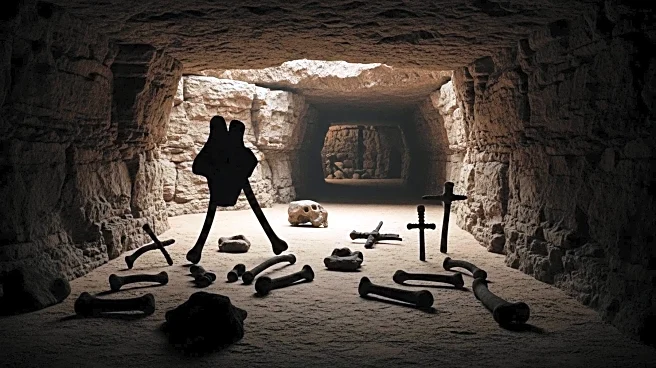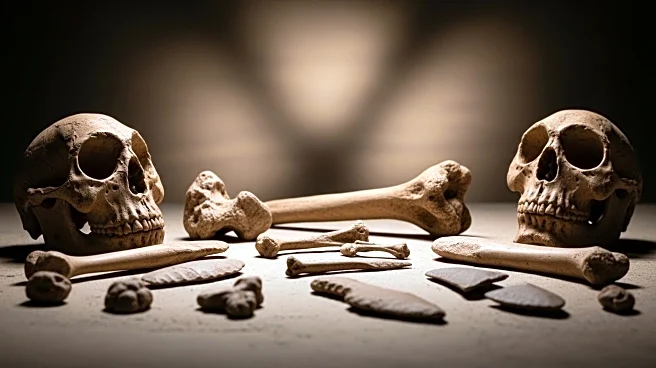What is the story about?
What's Happening?
Paleoanthropologist Lee Berger and his team have reignited the debate over whether Homo naledi, a small-brained species, practiced cultural burial long before Homo sapiens. Their latest peer-reviewed paper revisits a controversial burial site in South Africa, arguing that the arrangement of bones suggests intentional burial practices. Homo naledi lived over 240,000 years ago, predating the burial practices of Homo sapiens and Neanderthals by over 120,000 years. The hypothesis, first proposed in 2015, has faced skepticism due to circumstantial evidence, such as carvings and charcoal fragments found at the site. Despite criticisms, Berger's team continues to assert that the burial arrangement was deliberate, challenging existing notions of early human behavior.
Why It's Important?
The claim that Homo naledi engaged in burial practices significantly earlier than Homo sapiens challenges established timelines of human cultural evolution. If proven, it could reshape our understanding of cognitive and social development in early hominins, suggesting that complex behaviors emerged earlier than previously thought. This research could influence theories on the evolution of symbolic thinking and social structures, impacting fields such as anthropology and archaeology. The debate also highlights the importance of transparent scientific inquiry and the need for robust evidence in making groundbreaking claims.
Beyond the Headlines
The controversy surrounding Homo naledi's burial practices raises broader questions about the criteria for defining cultural behaviors in ancient species. It underscores the challenges in interpreting archaeological evidence and the role of scientific debate in advancing knowledge. The research also reflects the evolving nature of paleoanthropology, where new discoveries can prompt reevaluation of long-held beliefs. As scientists continue to explore early human history, the findings may inspire further investigations into the origins of cultural practices and their implications for understanding human evolution.
AI Generated Content
Do you find this article useful?















